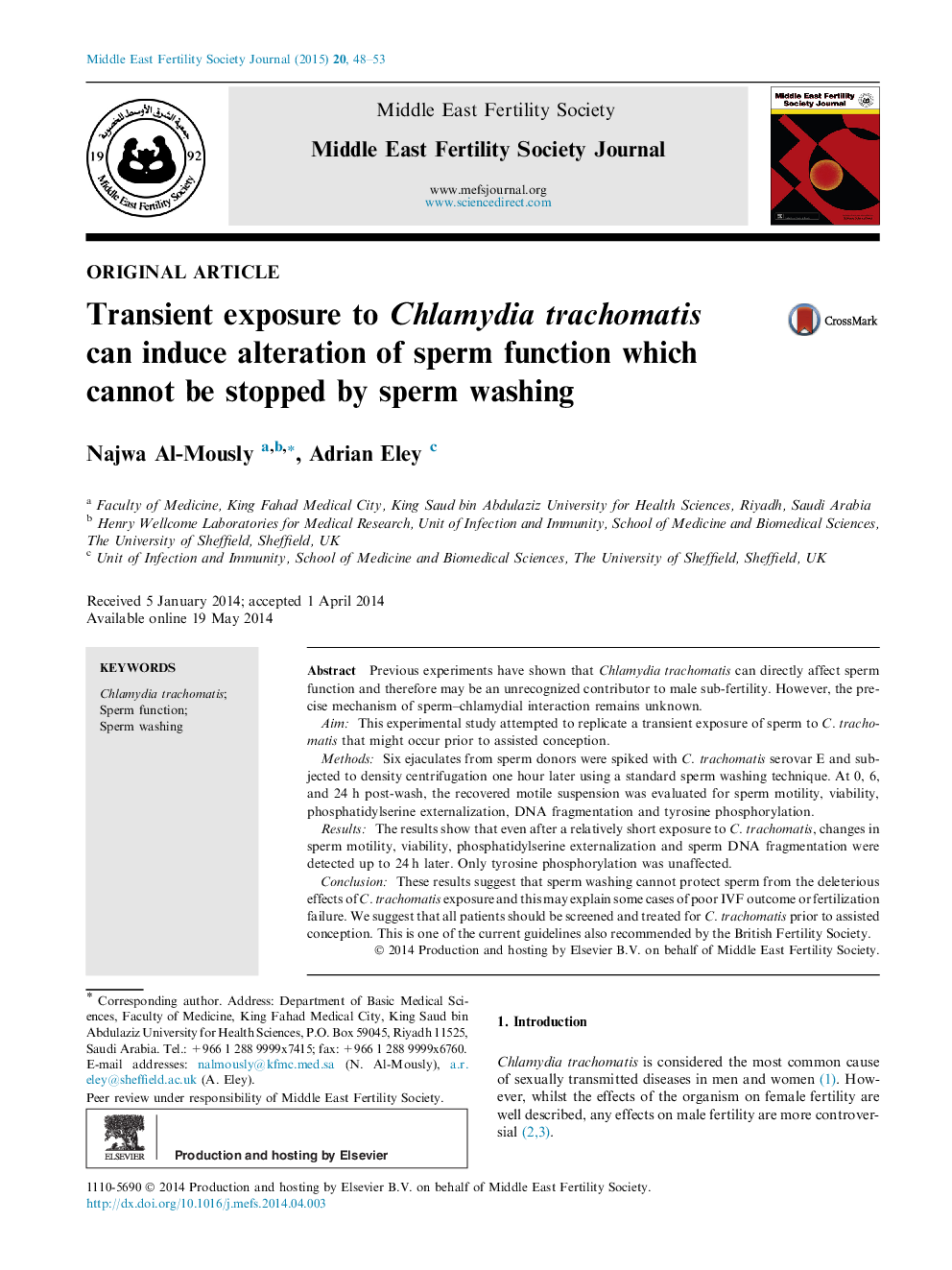| Article ID | Journal | Published Year | Pages | File Type |
|---|---|---|---|---|
| 3966189 | Middle East Fertility Society Journal | 2015 | 6 Pages |
Previous experiments have shown that Chlamydia trachomatis can directly affect sperm function and therefore may be an unrecognized contributor to male sub-fertility. However, the precise mechanism of sperm–chlamydial interaction remains unknown.AimThis experimental study attempted to replicate a transient exposure of sperm to C. trachomatis that might occur prior to assisted conception.MethodsSix ejaculates from sperm donors were spiked with C. trachomatis serovar E and subjected to density centrifugation one hour later using a standard sperm washing technique. At 0, 6, and 24 h post-wash, the recovered motile suspension was evaluated for sperm motility, viability, phosphatidylserine externalization, DNA fragmentation and tyrosine phosphorylation.ResultsThe results show that even after a relatively short exposure to C. trachomatis, changes in sperm motility, viability, phosphatidylserine externalization and sperm DNA fragmentation were detected up to 24 h later. Only tyrosine phosphorylation was unaffected.ConclusionThese results suggest that sperm washing cannot protect sperm from the deleterious effects of C. trachomatis exposure and this may explain some cases of poor IVF outcome or fertilization failure. We suggest that all patients should be screened and treated for C. trachomatis prior to assisted conception. This is one of the current guidelines also recommended by the British Fertility Society.
